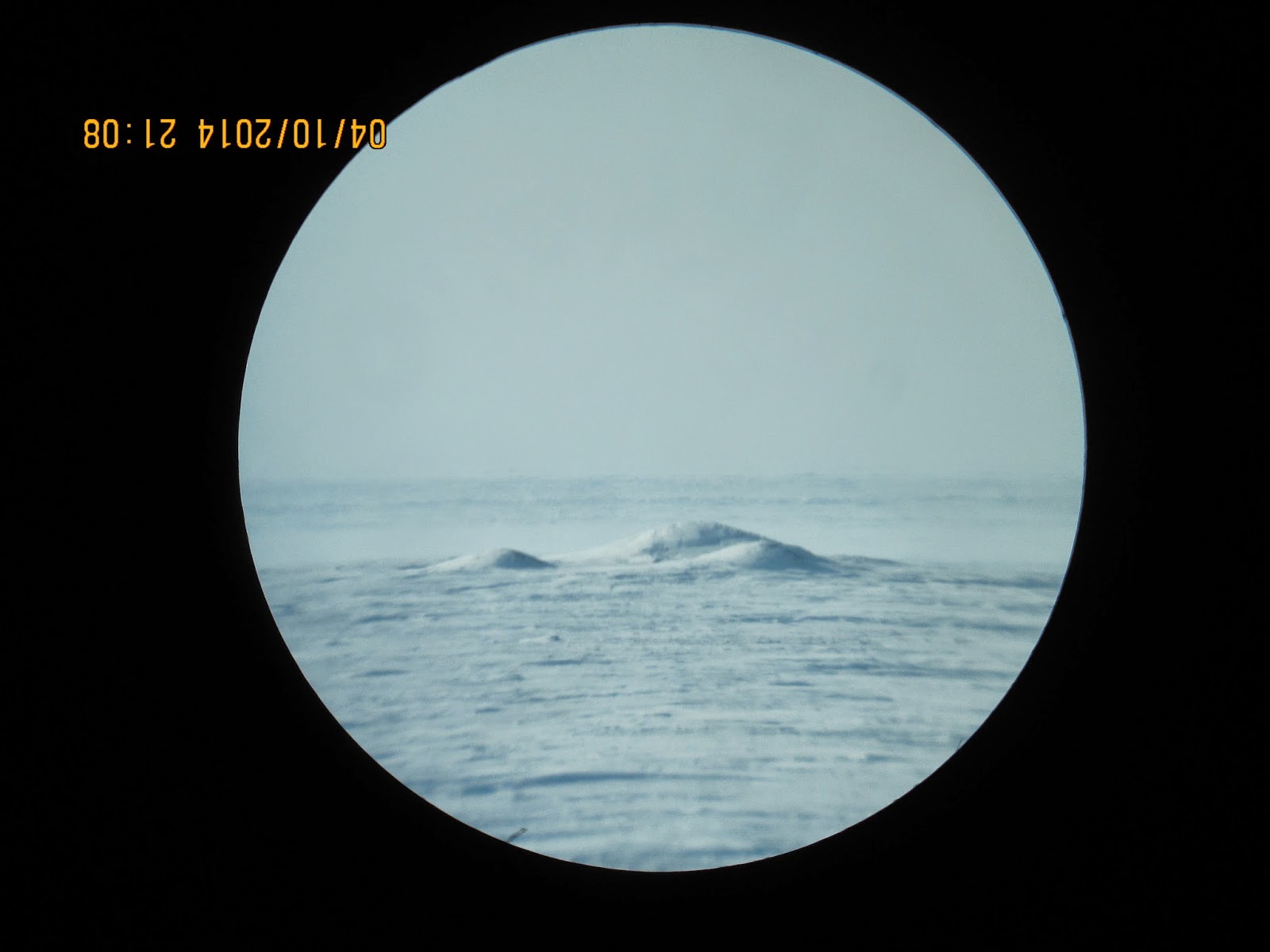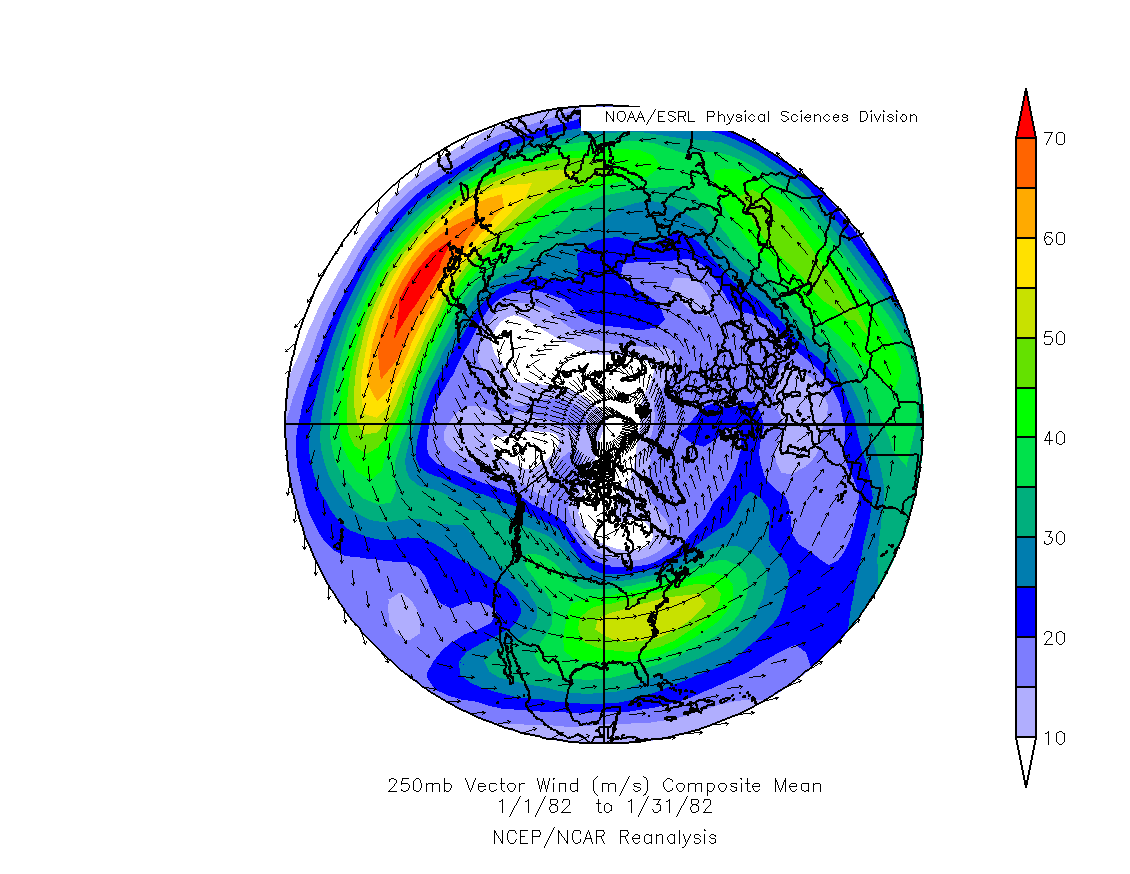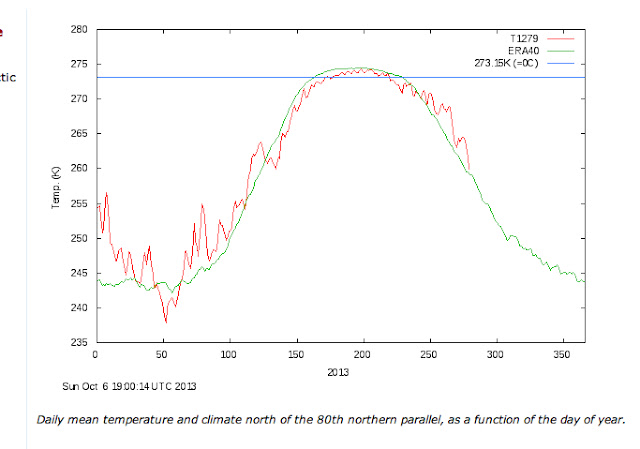Looking back, at December 1981 when the Arctic Ocean sea ice was much thicker, we can see the outline of this vastly thicker sea ice with Outgoing Long wave Radiation (left):
NOAA recalculation to the right shows the outline of older multiyear ice for December 2013. Here is proof in the effects of sea ice thickness on climate. In December1981 there was far less radiation escaping to space compared to 2013. Roughly 20 watts/m2.
This necessarily means thinner ice has an impact in profound ways, the buildup of winter, how big it becomes, how long it lasts, depends on how cold the Arctic and Sub-Arctic surface areas become. A prolonged cold period permeating a huge area of the Earth defines the winter bitter, too long, miserable. From the onset of a greater sea ice melt at minima, the world wide dark season becomes automatically warmer, shorter, less expansive, even with ideal conditions of thermal radiation cooling to space, the thinner than multi-year new ice warms the atmosphere, not only by thermal radiation from the sea, but because of its fragile state, creating more leads, venting moisture and gases to the atmosphere throughout the winter, as opposed to a period called spring "break up", when vast amounts of organic and inorganic gases, naturally trapped under the ocean for many months, gets unleashed with great amounts of water vapour, at about Mid-April onwards, when lower clouds and ice crystals overtook the sky. This eruption from the sea protected sea ice further by reflecting resurgent sun rays to space. For about a decade, this happened a lot less, while during these last 10 years or so the process of all winter venting did the opposite, it clouds the Arctic further during the dark season, deflecting radiation usually heading to space back to the sea ice. The OLR chart is worse than it seems, a lot more of thermal radiation returns to surface. Thus from darkness a warmer Arctic is seen on historic charts.
Translation in temperature terms
 |
The larger dark blue average temperature covering the Arctic Ocean was about 242.5 K, or -31 C.
That is the average temperature of sea ice surface for December 1981. |
We have seen that thick ice has its own thermal imprint seen all the way to space, it emits a lesser heat signature keeping the underlying sea cooler all year round. A key feature of Polar biology is how not diverse it is, how encroachment from southern species reveal this fact. At the core of this unique desert like feature is a steady predictable colder than not air temperature, rarely having great variances aside from the impacts of large cyclone incursions. A great change in temperature affects everything and everyone:
 |
The larger light blue for December 2013 is a mean temperature at about 247.5 K a full 5 degrees Centigrade above 1981.
The main obvious question to ask is how this temperature increase affect the entire Arctic? The immediate weather related answer is that there are lesser or weaker thermal inversions at the surface to air interface. These inversions are complex, but heat essentially renders them more scarce, this has huge implications with Anticyclone Genesis. What makes a High Pressure is descending air spreading outwards to a Cyclone. During the Long sunless Polar regions this air circulation favors a cooling process, air skims the risen to surface permafrost and it cools on its way to the Cyclones. Very cold air has much more stable properties than warmer, the cooler air has long shed its moisture , giving a negative feedback, the air freezes further by radiation escaping to space decreasing temperatures further. Multiple thermal layer layers are created one on top of each other, the coldest in bottom warming above.
Like the "Jupiter refraction bands" seen breaking up the sun disk at sunset: |

March 31 2004, very cold ground triggered isothermal boundary layers are seen breaking up the sun disk even to bend along with them diagonally. The sunset on
top of the hill captured a magnificent green flash, along with bent layering features.
Although distortions caused by by boundary layers still persist, as this March 24 2012 demonstrates. However, sunsets are gradually moving Southwards, the sun is seen more rounder southern like earlier in the year, the effect of thinner ice is also seen by the shifting horizon as well. This awaits another presentation.

Warming off the ground changes the sunset, the sun looks rounder, the layering vanishes. Land and seas capable once of fostering great anticyclones transform to cyclone bearing zones. April 28, 2013.
Isothermal layering on a grand scale fosters High pressure systems. During Polar winters these systems cool the Earth a great deal. If the Cyclogenesis system balance continues to change, like during current reduction of disappearance of sea ice as of current days, winter has no other way but to shrink in size, and be more wild and variable temperature wise because what is left of the cold air zone moves around with the rotation of the Earth. WD January 11, 2013



























